Story and photos by Joanna Khan
Malgre Tout is a tiny village on the West Bank Demerara bordered by Versailles and Klein Pouderoyen. Another village, Crystal Spring adjoins them from behind. The name Malgre Tout is French in origin. It translates to ‘after all’ or ‘in spite of everything.’
The village is just about 200,000 square metres and about a 20-minute drive from Georgetown. It has a population of a little fewer than 200 residents.
Malgre Tout is an alluring village that makes one wish to stay. The first thing persons visiting would notice is the cleanliness of the village. Lawns are mostly cut with not a piece of paper or plastic in sight. Its layout is serene and has houses of contemporary style while some remain vintage. It is a haven for persons wishing to lead a private life.
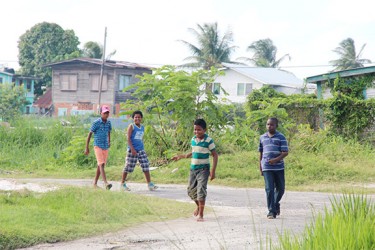
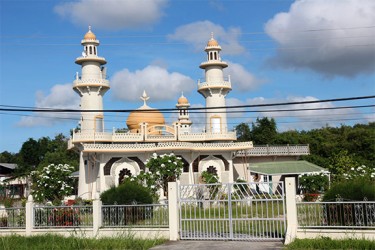
When ‘The world beyond Georgetown’ visited during the Easter season, many residents were not at home, while others who preferred to stay behind closed doors enjoying a life of privacy. Through the stillness the barking of dogs could be heard. A few happy, chattering boys wandered along the road looking for something fun to do to take up their spare time as school was out.
An elderly villager who wishes to remain anonymous related an incident that had occurred the previous day where a young man was hiding on her premises, possibly with the intention of stealing from her or harming her.
She said a neighbour spotted him hiding under the veranda and called out to her to secure all entrances and to be careful. When the neighbour did do, the man fled. The elderly villager boasted about the goodness of her neighbours who are concerned about the welfare of her and her husband.
According to villager and former headmaster Dhanraj Nagassar, the towering trees in the village date back to over 100 years. As old as they are, they still looked strong enough to tie a hammock.
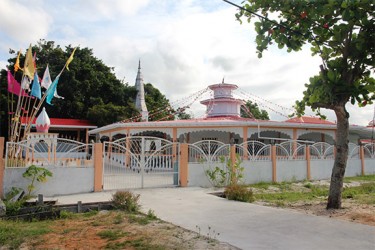
And the cool of their shade along with the breeze blowing across the nearby Demerara River, would make one drift off to sleep.

Fruit trees such as banana suckers, sugar cane and mangoes could be seen in many of the yards while flowering plants decorated yards and lined steps.
The residents enjoy the comforts of electricity, water, landline phones and proper roads. Groceries and other necessities can be purchased at the well-stocked R Tularam Supermarket in the village. The Hindu temple, Mosque and the Catholic Church tell of the different religions co-existing in the community.
Logies
Dhanraj Nagassar was born in Malgre Tout in 1948. He was born in a logie that housed his family along with 9 other families. Logies were mainly for the labourers and their families. Logies are no more today, but once housed sometimes up to 20 persons. These logies were divided into sections with a section for each family that had on average four to six people. Nagassar said he could remember that at one point there were 12 logies.
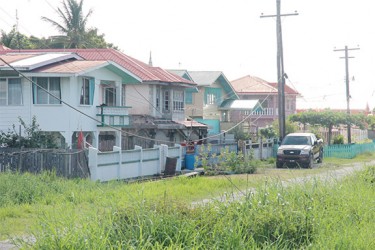
During his boyhood days too, the village had somewhere around 16 cottages. He said these cottages were occupied by the British managers of the nearby Plantation Versailles and their families.
Malgre Tout once had a dispensary, a mortuary and even a club open to the British managers and other workers of their category or rank.
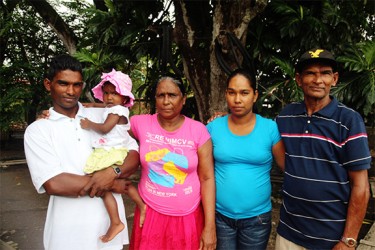
The 67-year-old recalled that his father, Nagassar (only name), who also grew up in the logie, worked at Versailles and the Schoonord Sugar Estate as a security guard. His mother worked as a nanny taking care of the children of the estate foremen who were called the ‘Sadar’ (translated loosely to mean official) and their wives who were called the ‘Sadarin’. She took care of them at a cottage which Dhanraj Nagassar eventually bought and made his home. His grandparents had also lived with them in the logie and they both worked at the estate as labourers.
According to Nagassar, who reminisced about attending the Malgre Tout Primary School, which still remains today and playing on a playground that is no more, attending school was difficult in his day since parents had to pay for their children’s education.
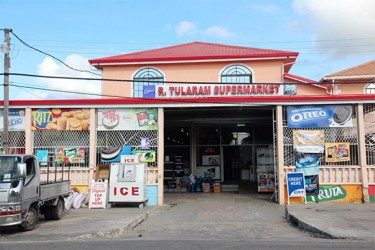
When his father passed away in 1955, he was just 7 years old and was forced to leave school. At the age of 9, he went back to school but skipped classes a few days every week so as to cut paddy. When he was 12 years old, his older brother took on the responsibility of sending him to school until he attained the age of 16.
At 16 he wrote the Preliminary School Certificate Examination (PCE) and at 17 the College of Preceptors (CP) exam. He went on to write his General Certificate of Education (GCE) exams, after which he acquired a scholarship from the Guyana Sugar Corporation (GuySuCo) in 1966 which he completed in the year 1971.
Nagassar taught at a number of schools for 36 years (1971-2007), including the Malgre Tout Secondary Department (which today is no
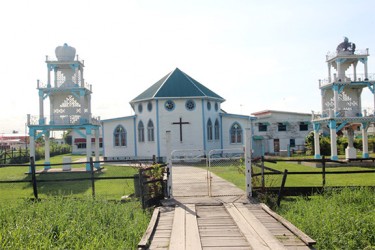
more). He served as Head of Department (HOD) at L Aventure Secondary and West Demerara Secondary and was Head Master (HM) for Hope Christian Academy. Nagassar was also Coordinator of Training at the Guyana National Service. He is a former member of the Police Management Advisory Committee and is still a member of the Board of City Guild of London Institute.
Now retired, he has a daughter who is a doctor in the United States from his first wife and eight other children (1 deceased) with his second wife Savitri Nagassar. He enjoys sports, reading, community development work and travelling as hobbies.
He recalled a time when most of the villagers depended on the Versailles Sugar Estate which was then known as Plantation Versailles and Schoonord, for a living. The sugar estate was privately owned by Joseph (Joe) Vieira whose father Manoel Vieira was also a pioneer for the sugar industry. Versailles Sugar Estate closed in 1977.
Today, villagers work as doctors, teachers, mechanics, among other professions and others are entrepreneurs. Some other prominent people to have come out of Malgre Tout are: Brenda Peters (Ministry of Culture, Youth and Sports), Mr Kazim, Mr Kingston, Mr Freeman, “Daddy King” and Dr Hugh George (Senior Dispenser) who is well-known from the West Coast all the way to Patentia for his efficient services.
Improvements
Today villagers would like to see improvements in certain areas in their community. They said that the drains, which are clustered with weeds and foliage, harbour dangerous snakes and cause flooding when it rains. They hope that the relevant authorities would take precautionary measures.
They also pointed to the need for recreational facilities for the children in the community and other surrounding communities, like clubs and a playfield where their children can interact and socialize with each other and desist from the lazy attitude of watching the television or playing video games.
Others said there was need for a library. “If our children can be preoccupied with edifying materials then they can be motivated to build a better society,” Nagassar said. And he also made a call for Voluntary Service Officers (VSOs) to teach and aid children in every subject, something that he himself wishes to do if he would be assisted by other volunteers.
Malgre Tout has come a long way from its colonial beginning when water came from a well and villagers used lanterns see at night, to pipelines and electricity. The village has evolved to one of comfort and beauty, what has stayed constant though is the residents’ respect and concern for each other.




